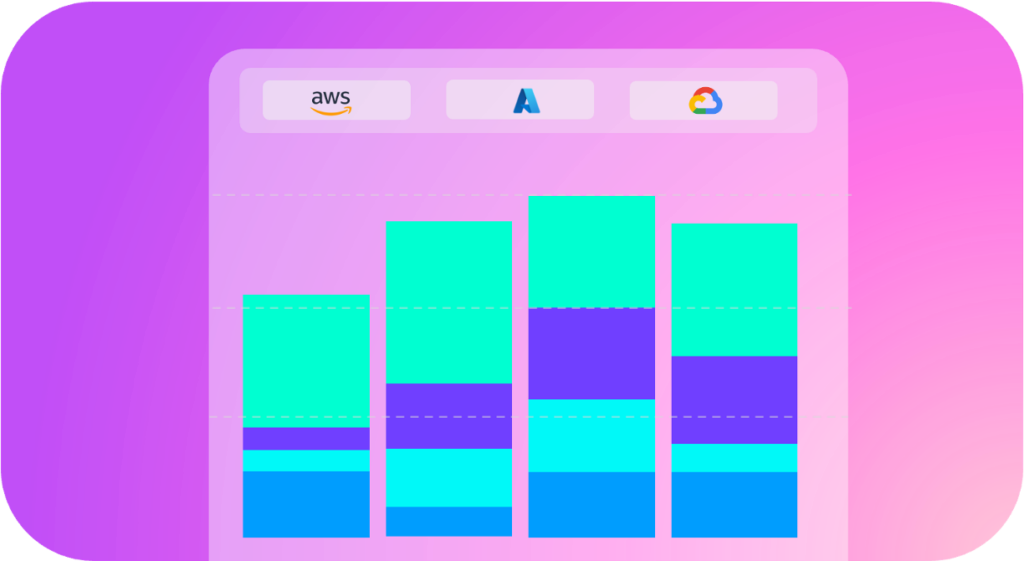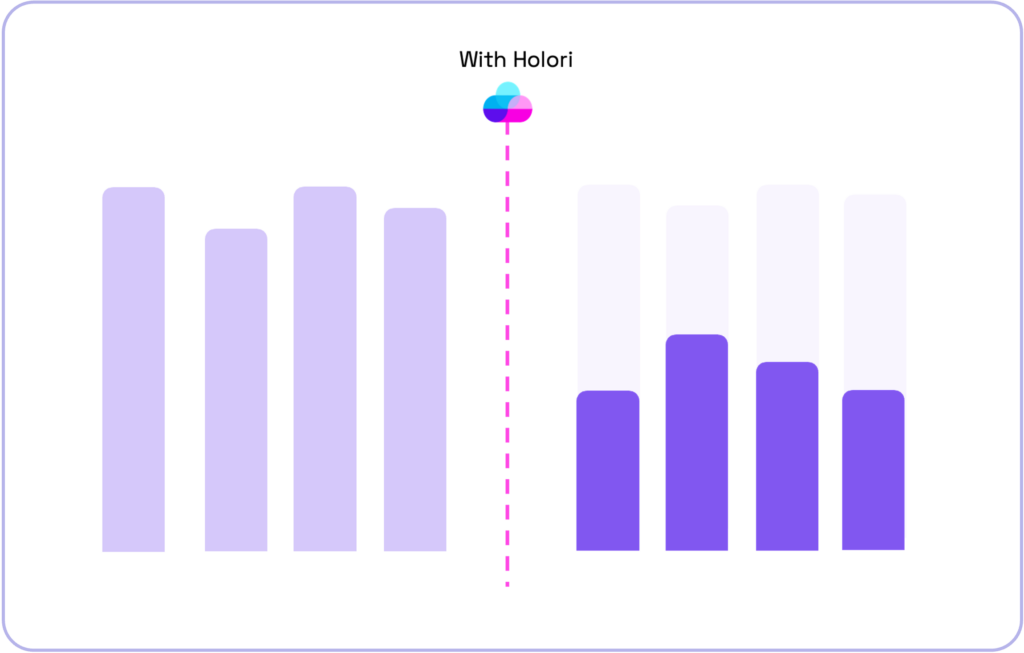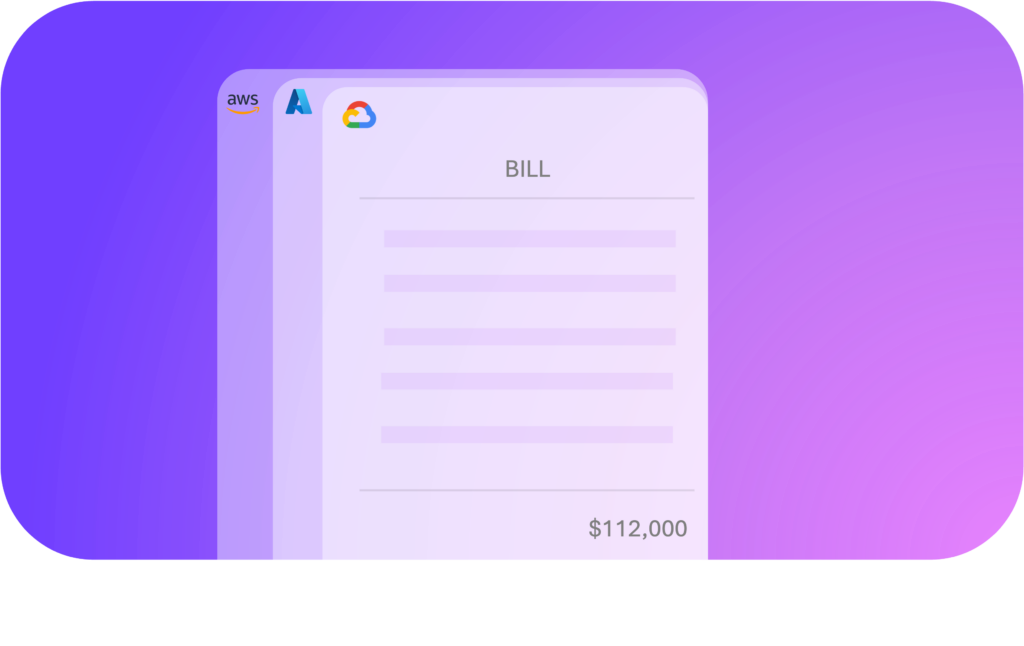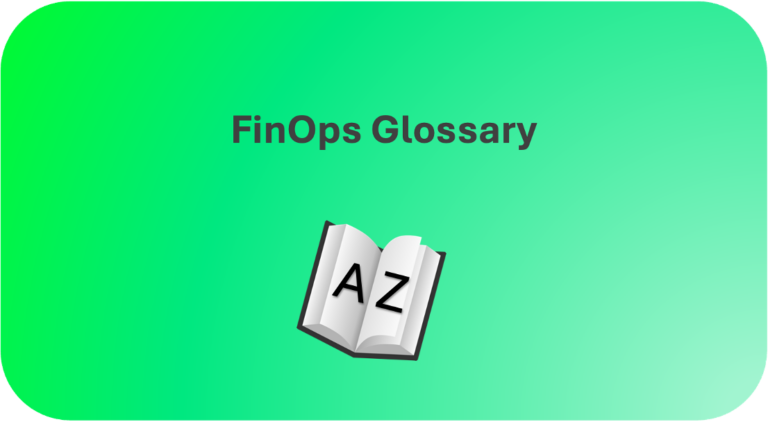FinOps, a new discipline uniquely positioned between Finance and DevOps, introduces a plethora of terms that professionals must master. Each cloud provider has its own specific vocabulary and unique terminologies, making it essential for finance professionals to learn cloud-specific terms and for DevOps teams to understand financial concepts and mindsets. To help organizations navigate the complexities of cloud financial management with confidence, we have compiled a comprehensive guide to the most important FinOps terms. This guide aims to bridge the gap between finance and operations, ensuring a seamless and efficient approach to managing cloud costs.
Cloud billing model
1- On-Demand Instances
On-Demand: This is the standard pay as-you-go model where cloud resources are billed at a fixed rate per hour or second, with no long-term commitment. They offer maximum flexibility but are usually more expensive than reserved or spot instances.
2- Reserved Instances (RIs)
Reserved Instances (RIs) are a pricing option that allows organizations to commit to using cloud resources for a specific period (typically one or three years) in exchange for a lower rate compared to on-demand pricing.
3- Spot Instances
Spot Instances offer cloud resources at significantly reduced rates compared to on-demand pricing, but with the caveat that they can be terminated by the cloud provider with little notice. They are ideal for flexible, non-critical workloads.
4- Savings Plans
Savings Plans are flexible pricing models that offer lower rates on cloud usage in exchange for a commitment to a consistent amount of usage (measured in $/hour) for a one or three-year period. Unlike reserved instances, they apply to a wider range of services.
5- Enteprise Pricing Agreements
Custom Pricing Agreements are tailored pricing contracts between an organization and a cloud provider, often including discounts and terms specific to the organization’s usage patterns and needs.
FinOps terms

1- Showback
Showback is a financial management technique where the costs of cloud services are reported to the respective business units without actual billing. This method promotes cost awareness and accountability within the organization.
2- Chargeback
Chargeback is similar to showback but involves actual billing of cloud service costs to the business units or departments that used them. It ensures that each unit is financially responsible for their cloud consumption.
3- Cost Allocation
Cost Allocation is the process of distributing cloud service costs to different departments, projects, or business units based on their usage. Effective cost allocation helps organizations track and manage their cloud expenditures more accurately.
4- Tagging
Tagging involves assigning metadata to cloud resources, such as virtual machines, databases, and storage, to categorize and manage them efficiently. Tags can include information like project names, environment (production, development), and cost centers, facilitating better tracking and reporting.
5- Budget Alerts
Budget Alerts are notifications set up to inform stakeholders when cloud spending approaches or exceeds predefined thresholds. They help in proactive cost management by preventing overspending.
6- Anomaly Detection
Anomaly Detection involves monitoring cloud usage patterns to identify unusual or unexpected spending. Tools that provide anomaly detection can help quickly identify and address cost spikes or inefficiencies
7- Asset Inventory
Resource Inventory involves maintaining an up-to-date list of all cloud resources and their configurations. This inventory is essential for tracking usage, optimizing costs, and ensuring compliance.
8- Billing Consolidation
Billing Consolidation allows organizations to combine multiple cloud accounts into a single billing account. This practice simplifies the billing process, provides a unified view of cloud spending, and can lead to volume discounts.
9- Cloud Sprawl
Cloud Sprawl refers to the uncontrolled proliferation of cloud resources, often resulting in inefficiencies and increased costs. Effective governance and management practices are needed to control cloud sprawl.
10- Cost Segmentation
Cost Segmentation involves breaking down cloud spending into different categories or segments, such as by service type, department, or project. This detailed view helps identify specific areas for cost optimization.
11- Unit Economics in Cloud
Unit Economics in Cloud refers to the cost and revenue associated with a single unit of product or service. Understanding unit economics helps in evaluating the financial impact of cloud usage.
12- Cloud Resource Utilization
Cloud Resource Utilization measures how effectively cloud resources are being used. High utilization indicates efficient use, while low utilization suggests opportunities for cost optimization.
13- Amortization
The costs of a cloud service spread evenly across its term instead of being charged entirely on the payment date.
14- Cloud Spend Visibility
Cloud Spend Visibility is the ability to see and understand all aspects of cloud spending. Enhanced visibility helps in tracking, analyzing, and optimizing costs.
15- Cloud Cost Benchmarking
Cloud Cost Benchmarking involves comparing an organization’s cloud costs against industry standards or similar organizations to identify areas for improvement and optimize spending.
16- Spend Under Management (SUM)
Spend Under Management (SUM) is a metric that tracks the proportion of an organization’s cloud spending that is actively managed and optimized through FinOps practices. Higher SUM indicates better control over cloud costs.
17- Cloud Budget Reconciliation
Cloud Budget Reconciliation involves comparing budgeted cloud spending with actual expenditures to identify variances and ensure accurate financial tracking.
18- Egress Fees
Egress Fees are charges imposed by cloud providers for data transferred out of their cloud environment to the internet or another external destination.
19- Cloud Waste
Any usage or cost of cloud resources which provide no value to a company.
Cost optimization terms

1- Rightsizing
Rightsizing is the process of adjusting cloud resources to match the actual needs of applications, ensuring that resources are neither over-provisioned (leading to waste) nor under-provisioned (leading to performance issues).
2-Unused Resource
Unused Resource: It refers to cloud resources that are provisioned and available but not actively being used or fully utilized, leading to unnecessary costs.
3-Overprovisioning:
Overprovisioning refers to the practice of allocating more cloud resources than are actually needed for a given workload, resulting in increased costs and inefficient resource utilization.
4-Cost Optimization
Cost Optimization is the continuous process of improving the efficiency and cost-effectiveness of cloud spending. It involves using tools, strategies, and best practices to reduce waste and maximize the value derived from cloud services.
5- Cloud credits
Cloud credits are promotional or incentive-based funds provided by cloud service providers to customers, allowing them to use cloud services at a reduced cost or for free up to the value of the credits. These credits are often used to encourage new users to try the platform.
Financial terms
1- Capex (Capital Expenditures)
Capex refers to funds used by a company to acquire, upgrade, and maintain physical assets such as property, industrial buildings, or equipment. Basically buying servers is a capital expenditures.
2- Opex (Operating Expenditures)
Opex refers to the ongoing expenses incurred from the day-to-day operations of a business, including costs like rent, utilities, and salaries. Paying AWS, Azure or GCP is Opex.
3- COGS (Cost of Goods Sold)
COGS represents the direct costs attributable to the production of goods sold by a company, including the cost of materials and labor used in production.
4- Total Cost of Ownership (TCO) in Cloud
Total Cost of Ownership (TCO) in Cloud is the comprehensive assessment of all costs associated with using cloud services, including direct and indirect expenses. TCO analysis helps in understanding the full financial impact of cloud adoption.
Cloud provider specific terms

1- Blended Rate
Blended Rate refers to the average cost of cloud services, combining on-demand, reserved, and spot instances into a single rate. This rate gives a high-level overview of costs but can obscure specific usage details.
2- Unblended Rate
Unblended Rate provides the cost of cloud services without any averaging. It shows the individual rates for on-demand, reserved, and spot instances, offering a clearer picture of how different types of usage contribute to overall costs.
3- Cost Explorer
Cost Explorer is a tool provided by cloud service providers, such as AWS, to visualize and analyze cloud spending. It helps organizations identify trends, detect anomalies, and pinpoint areas for cost optimization.
4- Enterprise Discount Program (EDP)
Enterprise Discount Program (EDP) is a negotiated agreement between an organization and a cloud service provider that offers discounted rates in exchange for a commitment to a certain level of spending over a specified period.
5- AWS Marketplace
AWS Marketplace is an online store where users can buy and sell software and services that run on the Amazon Web Services (AWS) platform, facilitating easy deployment and management.
6- Upfront: Full or Partial
Upfront full or partial payment models in the cloud allow customers to pay either the entire cost (full) or a portion of it (partial) at the beginning of the term to receive a discount on the overall price. This approach can lead to significant cost savings compared to paying for resources on an on-demand basis.
7- AWS accounts, GCP Projects and Azure subscriptions
AWS, resources are organized and managed within “accounts,” which serve as the primary billing and administrative unit. Azure uses “subscriptions” to group resources, defining the billing and access control for those resources. In GCP, resources are managed within “projects,” which act as containers for all the services and allow for separate billing and permissions for different workloads. cloud service providers, an account, project, or subscription refers to the same concept: a billing and management unit for resources.
8- Commitment Based Discount at AWS, GCP and Azure
Each cloud service provider (CSP) offers discounts on on-demand rates for cloud services in exchange for a commitment to use a minimum level of resources over a specified term. Examples of commitment-based discounts include:
- GCP’s “Committed Use Discount” (CUD) for Compute Engine and “Reservations” for BigQuery
- AWS’s “Reserved Instance” (RI) for EC2 and “Savings Plans” (SP) for Compute, EC2 instances, and SageMaker
- Azure’s “Reserved Instances” (RI) for VMs
General cloud glossary
1- Service Level Agreement (SLA)
Service Level Agreement (SLA) is a contract between a cloud service provider and a customer that specifies the expected level of service, including uptime, performance, and response times. SLAs often include financial penalties for non-compliance
2- Free Tier
Free Tier refers to a category of cloud services that are offered for free up to a certain usage limit, allowing users to explore and test the services without incurring costs.
3- Availability Zone
Availability Zone is a distinct data center location within a cloud region that provides independent power, cooling, and networking to ensure high availability and fault tolerance.
4- Region
Region is a geographical area that contains multiple availability zones, allowing users to deploy cloud resources close to their end-users for improved performance and redundancy.
5- GreenOps
GreenOps is the practice of managing and optimizing cloud operations with a focus on sustainability, reducing environmental impact, and promoting energy efficiency.
6- Cloud Repatriation
Cloud Repatriation is the process of moving workloads or data from the cloud back to on-premises infrastructure. This may be done for cost savings, security, or performance reasons.
7- Multi-Cloud Strategy
Multi-Cloud Strategy refers to the use of multiple cloud service providers to distribute workloads and mitigate risks. This approach can help organizations optimize costs, improve redundancy, and avoid vendor lock-in.
8- Cloud Governance
Cloud Governance involves the policies, procedures, and tools that organizations use to manage and control their cloud environments. Effective governance ensures compliance, security, and efficient use of cloud resources.
9- Cloud Cost Management (CCM)
Cloud Cost Management (CCM) encompasses the tools, strategies, and practices used to control and reduce cloud spending. It involves monitoring, analyzing, and optimizing cloud costs to ensure they align with business objectives.
10- Resource/Asset
Resource/Asset refers to any service or infrastructure component (like compute, storage, or network) that is used in a cloud environment to perform specific tasks.
11- SOC II (Service Organization Control 2)
SOC II is a framework for managing and reporting on the security, availability, processing integrity, confidentiality, and privacy of a service organization’s systems.
12- Serverless
Serverless is a cloud computing model where the cloud provider dynamically manages the infrastructure, allowing developers to focus on code without worrying about server management.
13- Cloud Reseller
Cloud Reseller is a company or individual that purchases cloud services from a provider and sells them to end-users, often adding value through additional services or support.
14- Cloud Pricing Calculator
Cloud Pricing Calculator is a tool provided by cloud service providers to estimate the cost of using various cloud resources and services. It helps organizations budget and plan their cloud expenditures.
Wrap up
This comprehensive FinOps glossary serves as a powerful reference for organizations navigating the complexities of cloud financial management. It bridges the gap between finance and operations teams by providing a shared understanding of essential cloud cost management terminology.
By delving into the glossary’s rich set of terms, finance professionals can gain fluency in cloud-specific vocabulary. This empowers them to effectively communicate with DevOps teams and participate in cost optimization discussions. Conversely, DevOps teams can leverage the glossary to gain valuable insights into financial concepts like cost allocation, chargeback, and total cost of ownership (TCO) in cloud.
Remember, FinOps is an ongoing journey. As cloud technologies and pricing models continue to evolve, so too will FinOps practices. We will therefore update this glossary on a bi-yearly basis. By staying up-to-date and embracing a collaborative approach, organizations can harness the true potential of the cloud while keeping costs under control. Using cost management tools like Holori, companies can implement an effective FinOps strategy.
Start with our free trial : https://app.holori.com/





